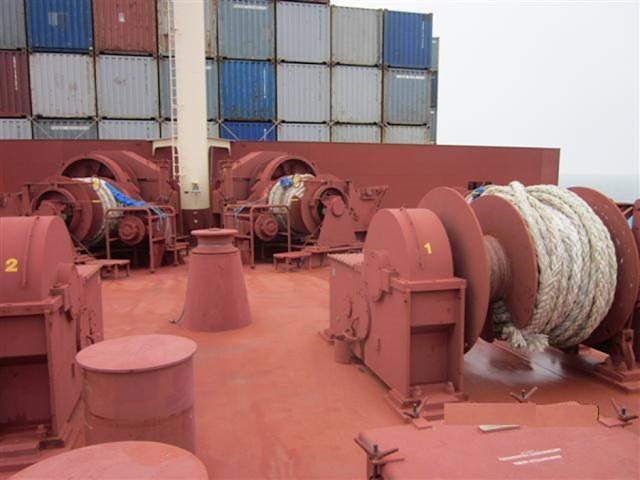#25 Important Points For Ship’s Mooring Equipment Maintenance
10 Important Points For Ship’s Mooring Equipment Maintenance
Correct operation of
the mooring equipment onboard is indeed important for the overall safe
operation of a vessel in port. Mooring, being such a critical operation,
reminds us of the fact that any unforeseen event could prove dangerous and sometimes fatal.
In order to implement safety
and avoiding lives to be at risk, it’s imperative for ship’s personnel to
maintain high standards of integrity of the mooring equipment. A better way
will be to incorporate all the parts of the mooring equipment into the ship’s
planned maintenance system.
Let’s see how to adhere to the maintenance of the mooring mechanisms onboard
1. Make Checks Prior Mooring
After an extended sea passage or a passage undertaken in heavy seas and prior to mooring operation, ensure to check the following –
- Any physical damages to the mooring mechanism.
- All controls, linkages and the operating levers are well oiled, greased and free / easy to use.
- Ensure that all the brake drums and linings are suitably dried and clean of salt deposits.
2. Do Frequent Greasing of Moving Parts
3. Check Brake
Liners
Regular inspections must be made of the winch / windlass brake
linings for wear and tear. Oil, heavy rust and moisture on the brake linings or
the drums could seriously reduce the brake holding capacity of the winch and in
some cases as much by 75%. To remove the moisture in the linings, apply the
brakes lightly while running the winch (remember to avoid excessive wear and
tear during this operation). Oil has the tendency to get impregnated into the
lining itself which is difficult to remove. Thus the only option would be to
change the lining as early as possible. Remember that the brake holding
capacity of the winch is dependent upon the type of mooring pattern used.
4. Check Break Drums
Whenever
brakes are opened up for any reason, ensure that the brake drum is thoroughly
checked / examined for build up of rust or other worn out brake material. The
part to be de-scaled and fitted with the replacement as required.
5. Check Brake Linkages

6. Inspect Gear / Hydraulic Oil
Inspect the gear oil regularly through the inspection
cover in the winch / windlass. Whitish color of the liquid means the liquid is
contaminated and requires to be changed immediately. Use the replacement oil
that is recommended by the manufacturers.
7. Carry Out Regular Visual Inspection
These are some of the important points that must be considered while carrying out mooring equipment maintenance. Do know any other important points? Let’s us know in the comments below.
Tip – Always check the grease nipples before application and make sure the nipples are free of rust, salt and grit. Change the nipples if necessary.
8. Clear Walkway
An important part of the mooring operation is to have the deck completely free
of obstructions and oily residues. Therefore, it is essential to keep the decks
clean, dry and if possible have anti-slip paint coatings over the deck surface,
as and how required. Often there have been cases where the support brackets for
the gratings (for winch operation) have been found neglected and therefore are
heavily corroded making the area most unsafe to step on. Officers should
include such neglected yet critical areas for planned maintenance in order to
prevent an unforeseen event when least expected.
9. Do Proper Marking and Labeling
Marking the mooring equipment is another important aspect for
a safe and effective operation. The ship’s officers should ensure that the
bollards, fairleads, rollers, etc. are marked with their safe working limits.
Additionally, the winches and windlass shall be marked for rotating direction
of the drums (render / heave), braking capacity, test dates and ID numbers of
the equipment subsequent to the certificates carried onboard.
10. Maintenance of Steel Wire Mooring Ropes
It is essential to grease and lubricate
the steel wire mooring ropes at regular intervals as rust will reduce the
strength of the wire in a very short period of time. Lubricating such ropes
require special grease, normally oil based compounds. An effective greasing is
carried out by removing the entire wire out of its stowed position and applying
the lubricant generously throughout the length of the rope. It is also
important to note that the wire should be turned end to end regularly to reduce
wear and prevent corrosion. Visual inspections are equally important and should
be carried out regularly with special attention to areas with dark patches. Any
wire shall be replaced if it is damaged to the extent that more than 10%
of the visible strands in a length of a wire equal to 8 diameters are broken.



Comments
Post a Comment